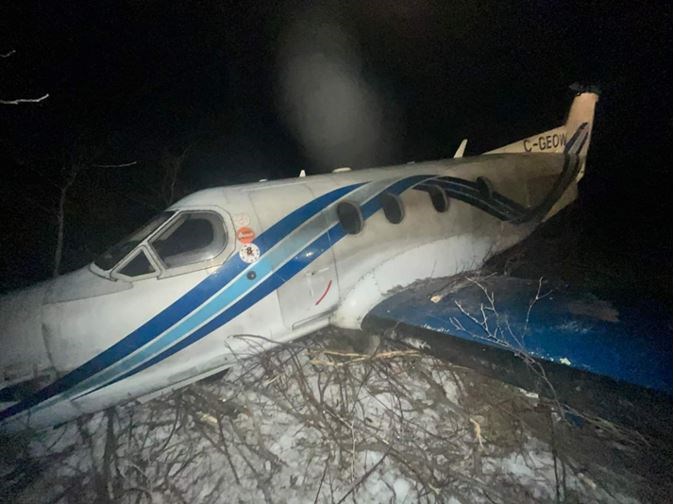WINNIPEG — The Transportation Safety Board says an incident in Northwestern Ontario last year that left a passenger plane with significant damage was just one of numerous similar occurrences in Canada, and highlights an issue that needs to be addressed.
None of the six passengers and two crew members was hurt in the November 2023 incident when an aircraft operated by North Star Air Ltd. overran the runway at the airport that serves Kasabonika Lake First Nation, during a gusting tailwind.
The Pilatus PC-12/45's landing gear collapsed, and the propeller, engine and cowling were substantially damaged by the time the plane came to rest 350 feet beyond the runway surface.
According to a report released Tuesday, the fuselage was also buckled, there was damage to the wings, ailerons, and flaps, and the main landing gear tires were blown, "with damage indicative of heavy skidding."
The TSB said it has investigated "many" runway overruns in the past few years, and it's a problem that "demands a concerted effort to be reduced."
The Kasabonika airport has a 3,519-foot-long gravel strip but does not have a 490-foot runway end safety area, nor is one required by existing federal regulations.
"As this occurrence demonstrates, when a runway overrun occurs during landing, it is important that the aircraft have an adequate safety area beyond the end of the runway strip to reduce adverse consequences," the report states.
It references a combination of circumstances at the time of the accident, including wind gusts, the landing speed, and the touchdown point, which was 1,200 feet beyond the runway threshold.
The TSB notes that the carrier subsequently revised its standard operating procedures to include more cross-checking to account for the impact of a tailwind on aircraft speed during final approaches.
"Pilots are reminded that when runway surfaces are contaminated, difficulty may be experienced maintaining directional control during crosswind takeoffs and landings," the board added in a general safety message to the industry.
"Pilots need to ensure their ground speed on approach correlates to published approach speeds and consider the runway conditions so that a safe landing can be accomplished, especially when aircraft performance calculations reveal that the total landing distance required is close to the runway length available."
The TSB investigates air, marine, pipeline and rail transportation occurrences to advance transportation safety, but its function does not include assigning fault or determining liability.
